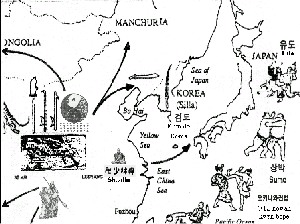A Way to Achieve a Superior Quality of Life Through Traditional Moo Doe
Traditional Moo Doe is known as one of the best ways to reach a point of total harmony. It has been used to achieve total physical balance internally and externally, which results in longevity and the ability to develop incredible physical, mental, and spiritual strength. The combination of correct principles and correct sequences with the proper body adjustments is necessary for this development.
Traditional Moo Doe movement has been developed over many centuries. There have been hundreds of thousands of practitioners who have dedicated their lives to finding the fastest and safest ways to absorb nature’s energies in order to purify the mind, body, soul, and spirit. For this reason millions of people throughout history have searched for the wisdom, skill, and knowledge held by the Grandmasters and Masters of Traditional Moo Doe. Their search was to not only develop the ability to achieve incredible strength and skills, but to earn the lifelong benefits and quality of life that increase with each higher level of movement.
Each Traditional Moo Doe movement benefits a specific area of the mind and body. With the correct movements one will see and feel the strengthening in the weak areas of the body within two weeks. To reach one’s full potential of strength and ability requires the correct sequences of these movements.
Three Components of Traditional Moo Doe
- Moo Doe Principle
- Internal and External Foundation Development
- Correct Sequence with Proper Adjustment
| Origins of Traditional Moo Doe |

(click for larger version) |
|
This map illustrates the origin and spread of Moo Doe knowledge which began near the location of the Oom Yung (Yin Yang) symbol. During the Han and Tsu dynasties, Ship Pal Gae (18 Weapons) was developed in China and, later, spread to other regions of Asia.
|
|
|
3 of 8 Ways to Teach Traditional Moo Doe
- The Grandmaster or Master is directly involved in teaching individuals how to balance their mind, body and spirit ensuring a better understanding of the depth and value of Traditional Moo Doe.
- The Grandmaster or Master teaches Traditional Moo Doe to instructors who then pass this knowledge down to students.
- The Grandmaster or Master releases Sae Gae Moo Doe training methods which, when used with the secret herbal extracts, apparatus and training, allows an unlimited number of people to quickly realize the strength and value of Traditional Moo Doe.
Traditional Sae Gae Moo Doe Training
Each seminar has a unique combination of the following:
- Herbs
- Moo Doe pressure points
- Various types of Moo Doe practice equipment
- Correct Hyung sequences
- 36 Types of Sae Gae Moo Doe Seminars (18 Internal, 18 External)
- General
- Sang (Upper body)
- Joong (Middle body)
- Ha (Lower body)
- Approximately 10 Seminars to reach a Superior Quality of Life
Benefits of Traditional Sae Gae Moo Doe Training
- Weak areas are strengthened, bringing harmony to the mind and body.
- Energy levels increase both internally and externally.
- Immune system functions improve, protecting against illness and disease.
- Physical reflexes become sharper, protecting you and those around you in unexpected situations.
These Benefits Lead To:
- Defining a path for success in life.
- Improved health with greater physical and mental capability leading to greater efficiency; do more in less time with less effort.
- Longevity and quality of life
- Knowledge of how to maintain and re-harmonize your mind and body.
Flow of Knowledge
|